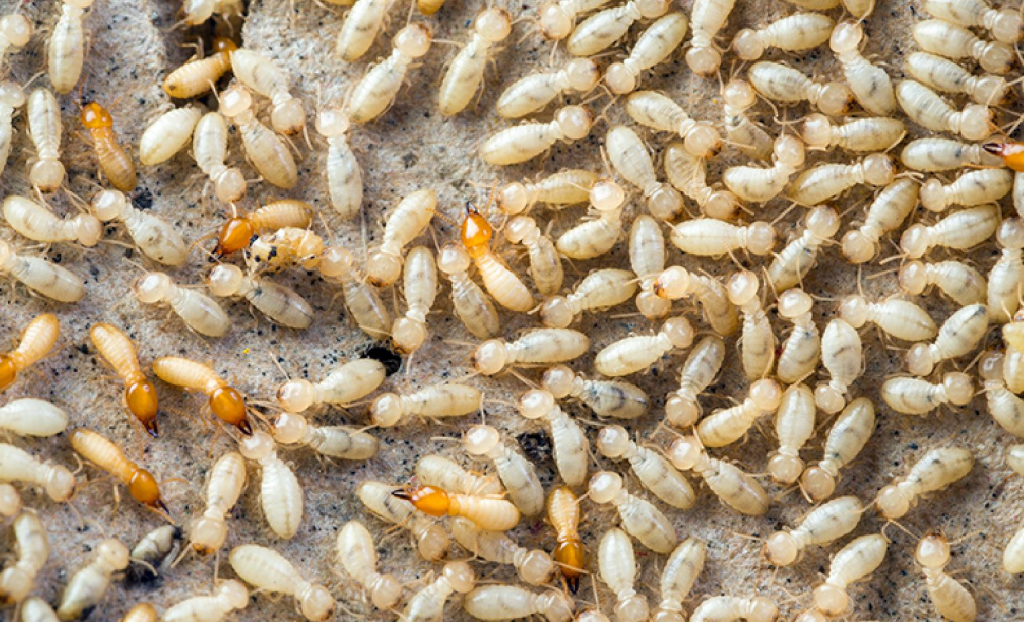Table Of Content

Finding a qualified professional who can identify the type of termite infestation is crucial for getting rid of these wood-damaging insects. This frass is then expelled from the termite colony through small openings, known as kick-out holes, in the infested wood. These holes are often a telltale sign of termite presence, as the termites push the frass out to keep their galleries clean and maintain a nice environment for their colony. Detecting termite droppings is a critical sign of a termite infestation. If you see sawdust in your home, but haven't recently done any sanding or sawing, know that it is not really sawdust. Take immediate action to protect your property from damage by calling a pest control specialist.
You See Dust Near the Bottom of the Wall
Remember to check out your basement and crawl spaces for them, too. Termites can sneak in from below and leave their wings in those dark and damp areas. Also, keep an eye out for discarded wings near wooden structures like decks, fences, or anything made of wood.
Contact us today to eliminate pests in and around your home.
Lowe is a lead editor, covering all things related to home improvement and good design. She previously worked in the decor and lifestyle spaces for digital publishers such as Hunker, First Media and Ranker and has multiple years of experience creating design and DIY content. Red-back, white-tailed, huntsman and wolf spiders are all commonplace in gardens, sheds and sometimes homes across the state. Although they're relatively harmless, ants can become serious pests - here's how to eradicate them.
What’s Eating Your House?
Often, there are no real signs of a termite infestation in the beginning. But as the infestation continues, you may notice mud tunnels in your crawlspace or running along the outside of your home to the level of floors or walls. Whether you are building a new home or trying to preserve a house that has been in your family for years, termite control specialists can help protect your home for many years to come. A good way to think about mud tubes is that they are essentially subterranean termite highways. These passageways are only about the width of a pencil and are made from wood particles, soil and termite feces.
Other things, like water damage, can affect the quality of the wood in a home. However, termites also like damp wood, so even if they aren’t the cause of warped windows, noticing the need for repair can help prevent a future infestation. Within termite colonies, termite swarmers have two evenly-sized pairs of wings that extend past their bodies. Wondering how to see these insects’ wings if they typically stay hidden?
Your Wall Paint Is Bubbling or Flaking
Explore what to do if you find mud tubes and when you should conduct a termite inspection. We’ll determine whether you actually have termites, then discuss a treatment plan including financing that works for you. Subterranean termites live in soil and wood that's connected to the soil. These termites live in decaying wood with various moisture content. If you have wood steps, a concrete block at the bottom of the steps may confuse the termites enough to keep them from climbing to wooden steps.
Commercial pest control management companies have access to the materials and products necessary to eliminate termites. They do this through soil treatments or termite baiting stations. The most common form of termite in most of the United States is the native subterranean termite.
They have strong jaws for defending their colony from ants and other invaders. They have soft, pale bodies that measure around a fourth of an inch—like a long grain of rice—with a round head, six legs, and two antennae. High moisture levels and lots of wood are the popular reasons for luring termites to your home. Putting these together, like rotted water-wood, is a feast for these little crawlers.
Those mysterious structures are subterranean termite mud tubes that they use to safely travel above ground when needed. Termite infestations can compromise the structural stability of a home, and cause thousands of dollars in damage, without anyone even knowing. It’s important to get a termite inspection done by a licensed pest professional every one to three years to keep the property safe from termites.
Baton Rouge chews its way onto list of most termite-infested cities in the U.S. - WAFB
Baton Rouge chews its way onto list of most termite-infested cities in the U.S..
Posted: Wed, 13 Mar 2019 07:00:00 GMT [source]
Other, less common, types of termites include the smaller drywood termite and the invasive Formosan termite. While termites do leave sawdust-like droppings, Webb says the common eastern subterranean termites leave their droppings inside of wood, where you’re unlikely to see them. Like most insects that find their way inside, termites look for the easiest possible entryway—which is often around window and door seals. If those door and window frames also serve as good food, then the termites may set up shop there for a while.
Plastics that are sensitive to heat, including vinyl windows, have to be protected or removed. Nationwide, termites inflict more than $2.5 billion worth of damage on homes each year. Flying termites, also called swarmers, are sometimes confused with carpenter ants because of their dark color. However, a flying termite has a long, uniform body with four equal-sized wings.

Named for the cone-shaped head their soldiers have, conehead termites travel above ground similar to ants, rather than via underground tunnels like other species. Although conehead termites are primarily found in various southern regions of Florida, any infestation could possibly have a significant impact on the structural integrity of a building. Termites also look to eat anything with cellulose, such as magazines, books, textiles, and furniture. If you notice damage to any of these items, you may have termites.
They're known to be attracted to water-damaged household areas, like spaces suffering from cracked drainpipes or roof leaks. If they get inside a structure, they will hide inside wooden support beams and conceal their entry holes with their own feces. Subterranean termites are most likely to create mud tubes, which are brown-colored tunnels composed of wood and soil, measuring about 0.5 to 2.5 centimeters wide.
You might feel like destroying the tubes as soon as you see them. However, it is important not to as you might make the problem worse. If you crack open the tubes, termites will likely start spilling out of them.
When used in combination with a heater, can also make termite galleries visible. Pinpoints areas with high moisture levels — 15 percent or above — which are more likely to harbor some types of termites. Learn the signs to look for to determine if you might have a termite infestation. Channels of caked-up mud and termite debris begin in the soil and trail up to the wood of a house.

No comments:
Post a Comment